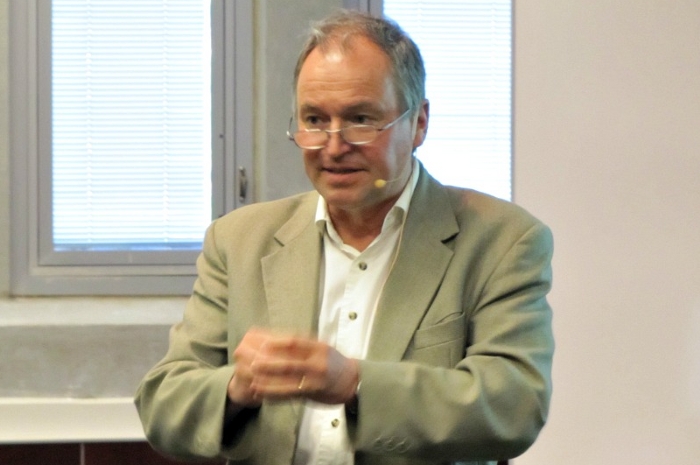NIMBioS Seminar Series
In conjunction with the interdisciplinary activities of the National Institute for Mathematical and Biological Synthesis (NIMBioS), a seminar series on topics in mathematical biology will be hosted at NIMBioS every other Tuesday at 3:30 p.m. (unless otherwise noted) in the Hallam Auditorium, Room 206, Claxton Building, 1122 Volunteer Blvd. Seminar speakers will focus on their research initiatives at the interface of mathematics and many areas of the life sciences. Light refreshments will be served in Room 205 beginning 30 minutes before each talk. Faculty and students from across the UT community are welcome to join us.
Time/Date: Tuesday, April 21, 2015, 3:30 p.m.*
Location:
Room 206, Claxton Building, 1122 Volunteer Blvd.
Speaker:
Dr. Mats Gyllenberg, Mathematics and Statistics, Centre of Excellence in Analysis and Dynamics, Univ. of Helsinki
Topic:
Functional responses and how they evolve by natural selection
Abstract: The functional response is a fundamental concept in theoretical biology. By definition, it is the number of prey eaten by a predator per unit of time. Most often, as in the pioneering work by Holling and co-workers in the 1950s, the functional response is a function of prey density, but in the mid 1970s DeAngelis and Beddington et al. independently put forward the idea that it could depend on the predator density as well.
The purpose of this talk is twofold: Firstly, I present a mechanistic derivation, based on assumptions concerning individual behaviour of predator and prey, of the DeAngelis-Beddington functional response. Surprisingly, it turns out that the dependence on the predator density in the DeAngelis-Beddington functional response is a consequence of prey behaviour and not of predator behaviour. Proponents of the functional response have previously argued that competition among predators should be reflected in the functional response.
A great advantage of the mechanistic derivation is that all parameters in the functional response reflect individual traits that are subject to natural selection. In the second part of my talk I use adaptive dynamics to investigate possible evolutionary outcomes of natural selection on one of the parameters, viz. "timidity" of the prey, that is, its readiness to seek refuge. It turns out that the results depend on whether the predator-prey system remains at equilibrium or whether it exhibits cycles. As a matter of fact, typical predator-prey cycles that can be observed in nature could be the result of natural selection.
*Join us for refreshments at 3 p.m. in Room 205.
Seminar Flyer (pdf)
NIMBioS seminars are available for viewing via live streaming during the talk and are also recorded and archived for later viewing. Click here for a listing of available seminars videos.
For more information about this and other NIMBioS Seminars, visit /seminars.

NIMBioS
1122 Volunteer Blvd., Suite 106
University of Tennessee
Knoxville,
TN 37996-3410
PH: (865) 974-9334
FAX: (865) 974-9461
Contact NIMBioS



